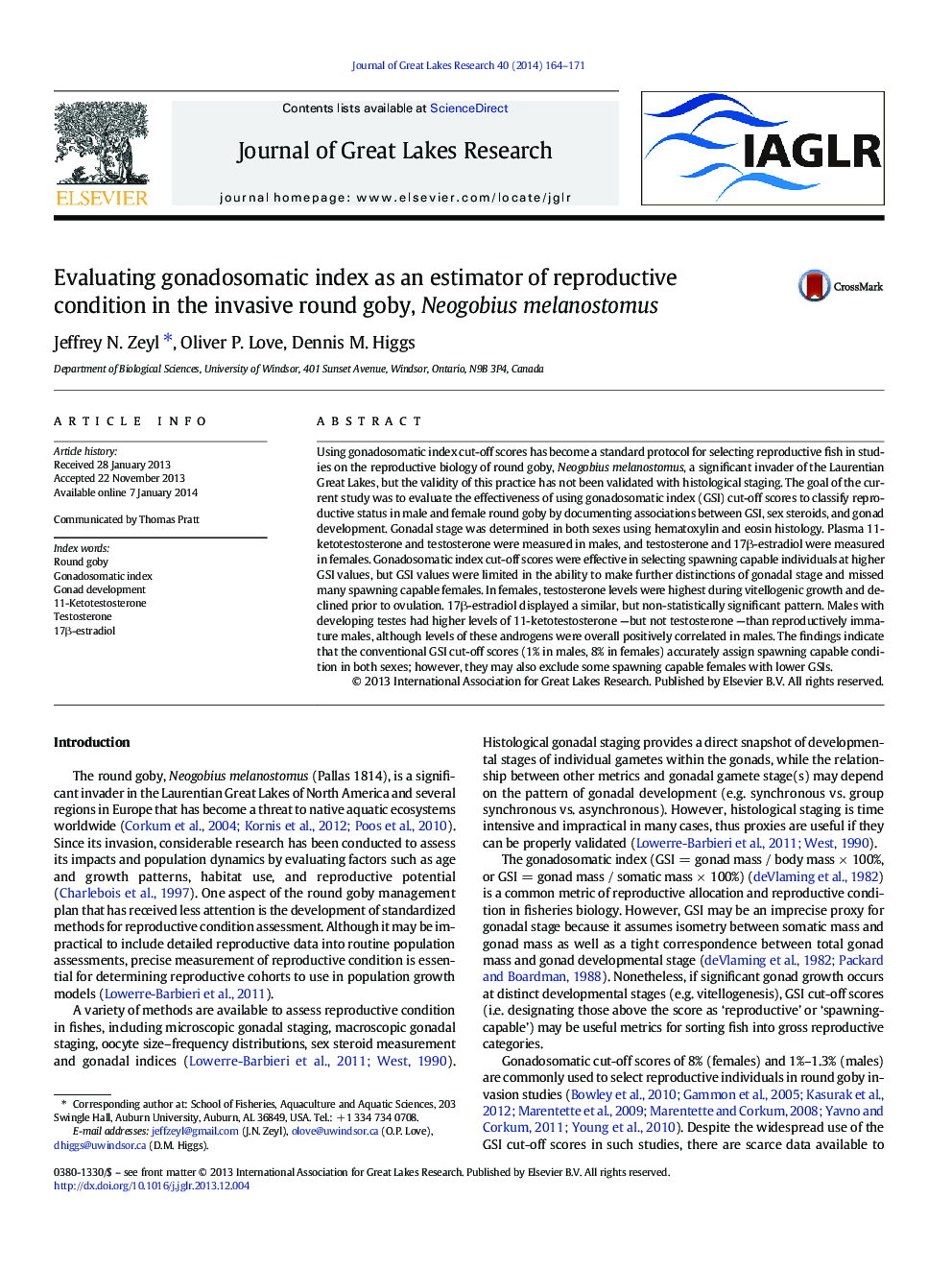| Article ID | Journal | Published Year | Pages | File Type |
|---|---|---|---|---|
| 6305374 | Journal of Great Lakes Research | 2014 | 8 Pages |
Abstract
Using gonadosomatic index cut-off scores has become a standard protocol for selecting reproductive fish in studies on the reproductive biology of round goby, Neogobius melanostomus, a significant invader of the Laurentian Great Lakes, but the validity of this practice has not been validated with histological staging. The goal of the current study was to evaluate the effectiveness of using gonadosomatic index (GSI) cut-off scores to classify reproductive status in male and female round goby by documenting associations between GSI, sex steroids, and gonad development. Gonadal stage was determined in both sexes using hematoxylin and eosin histology. Plasma 11-ketotestosterone and testosterone were measured in males, and testosterone and 17β-estradiol were measured in females. Gonadosomatic index cut-off scores were effective in selecting spawning capable individuals at higher GSI values, but GSI values were limited in the ability to make further distinctions of gonadal stage and missed many spawning capable females. In females, testosterone levels were highest during vitellogenic growth and declined prior to ovulation. 17β-estradiol displayed a similar, but non-statistically significant pattern. Males with developing testes had higher levels of 11-ketotestosterone -but not testosterone -than reproductively immature males, although levels of these androgens were overall positively correlated in males. The findings indicate that the conventional GSI cut-off scores (1% in males, 8% in females) accurately assign spawning capable condition in both sexes; however, they may also exclude some spawning capable females with lower GSIs.
Related Topics
Physical Sciences and Engineering
Earth and Planetary Sciences
Earth and Planetary Sciences (General)
Authors
Jeffrey N. Zeyl, Oliver P. Love, Dennis M. Higgs,
